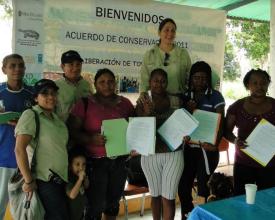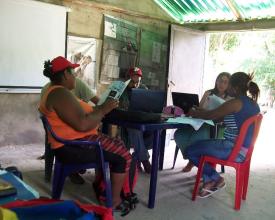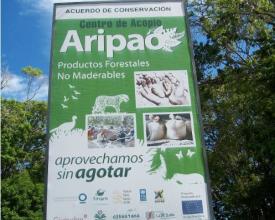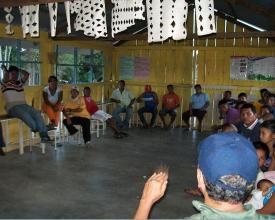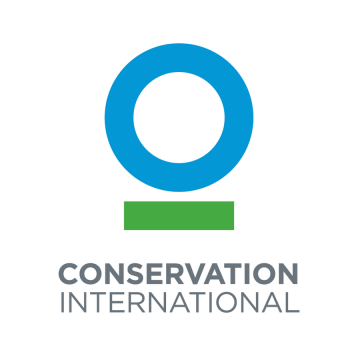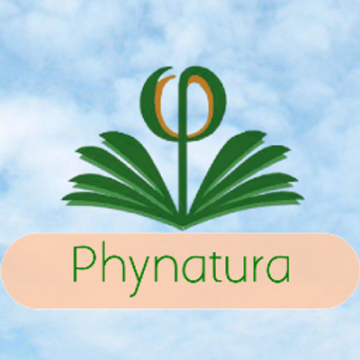
Lograr la sostenibilidad de los acuerdos de conservación en El Caura, Venezuela
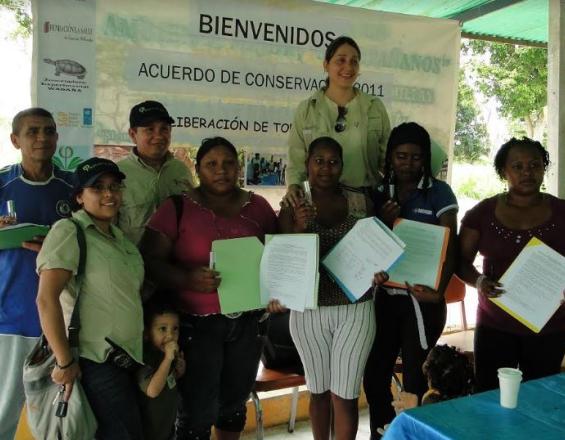
Para lograr la sostenibilidad de los acuerdos de conservación en El Caura, Phynatura ha generado capacidades sociales, financieras y de conservación en las comunidades locales. Actividades relacionadas con educación ambiental, monitoreo ambiental, contabilidad para pequeños negocios, entre otros, redundan en conservación, organización local, comercialización de productos no maderables del bosque y comunidades capacitadas. Con todos estos elementos que garantizan la conservación en el Acuerdo de Conservación Suapure dentro de la Reserva Forestal Caura, es el momento de lograr la sostenibilidad a través de la consolidación de las comunidades como actor principal en los acuerdos de conservación.
Contexto
Défis à relever
En una economía con un futuro incierto como la venezolana, las acciones sencillas se convierten en un reto. En la cuenca del Caura, la extracción ilegal de oro ofrece una alta compensación en comparación con los ingresos tradicionales. Por lo tanto, lograr la sostenibilidad y agregar otras áreas bajo este esquema en sí mismo es un reto. Acciones como el desarrollo de estrategias de análisis de cadenas de valor para promover la comercialización, en términos justos y sociales, de otros productos forestales no maderables con alto potencial en la región; consolidar la estrategia de educación ambiental basada en acciones de conservación y beneficios, con el desarrollo de conocimientos en todos los niveles de educación básica y talleres comunitarios; y la creación de un fideicomiso con los compromisos de venta a largo plazo de PFNM, cooperación y donaciones para asegurar que las acciones de conservación y sostenibilidad de los acuerdos sean realmente necesarias.
Ubicación
Procesar
Resumen del proceso
El Acuerdo de Conservación es el instrumento que sustenta la alianza trisectorial representada por la sociedad civil (ONG), las comunidades y el sector privado. En primer lugar, la ONG Phynatura creó capacidades comunitarias, diseñó y puso en marcha programas de seguimiento, y midió los resultados y vinculó a los distintos actores. En segundo lugar, la comunidad local de Aripao se organizó en una Asociación Civil para poder administrar los recursos y ejecutar las acciones. Tercero, Givaudan actúa como comprador de la sarrapia (Dipterys punctata) un producto forestal no maderable recolectado por la comunidad.
Una vez que las actividades alcanzaron un resultado satisfactorio, se invitó a otras comunidades a participar. En este caso, la comunidad de Aripao es la encargada de generar las capacidades de la comunidad indígena La Colonial, brindando apoyo desde el diseño del Convenio de Conservación hasta la capacitación de diferentes actividades como monitoreo ambiental, recolección de sarrapia, contabilidad, entre otras.
De esta manera, el acuerdo de conservación es un bloque donde se pueden construir otros bloques, como la inclusión de otras comunidades en iniciativas sostenibles.
Bloques de construcción
Creación de asociaciones trisectoriales
Para definir el Acuerdo de Conservación, los socios adaptaron y aplicaron el modelo de creación de alianzas trisectoriales. Este modelo ayuda a crear alianzas entre sectores con intereses diversos para promover iniciativas locales de desarrollo sostenible. En este caso, involucramos a la comunidad de Aripao, a la empresa Givaudan, compradora de los productos no madereros del bosque, y a Phynatura, organización de apoyo y articulación.
Factores facilitadores
Para que este bloque tuviera éxito, fue necesario un proceso de comunicación eficaz, que indicara las prioridades y compromisos de cada sector y generara capacidades en aquellos miembros que necesitaran herramientas en los procesos de negociación. Dado que la sarrapia es el producto en el que se basa la alianza, estaba claro desde el principio que la preservación del bosque y el conocimiento tradicional eran elementos por los que todos los sectores debían trabajar.
Lección aprendida
La alianza trisectorial dependió de la construcción de consensos básicos entre autoridades gubernamentales, organizaciones de la sociedad civil y empresas privadas, en torno a temas prioritarios o sociales para los tres actores. El éxito de las estrategias vinculadas al desarrollo sostenible se facilita cuando cada sector conoce su función facilitando que las comunidades que dependen de los recursos naturales construyan medios de vida sostenibles.
Acuerdo de conservación
Con la firma del Acuerdo de Conservación de 2012, la etapa de gobernanza del proyecto fue iniciada por la comunidad Aripao, inicialmente organizada en torno al Comité de Conservación, y formalizada en una entidad jurídica independiente denominada Asociación Civil Afrodescendiente Arpao (ACA Aripao).
La Asociación Civil Afrodescendiente Aripao y Phynatura iniciaron un estudio de viabilidad de Acuerdos de Conservación con las comunidades indígenas de La Colonial, El Cejal, Payaraima y Karana, limítrofes con el Área de Conservación de Suapure.
Factores facilitadores
Las comunidades indígenas mostraron interés en participar considerando que se podrían mejorar sus ingresos y su territorio. Con la consolidación del comercio justo de productos no maderables, la construcción y operación del centro de acopio y la creación de la Asociación Civil Afrodescendientes Aripao como expresión de comunidad organizada, el proyecto comienza a ser aceptado por la comunidad indígena como una alternativa de subsistencia, consolidando el desarrollo sostenible y la importancia de la conservación de los recursos naturales.
Lección aprendida
La construcción de una gobernanza alternativa en las comunidades, a través del empoderamiento, el desarrollo de capacidades y el autorreconocimiento territorial, ha sido clave para la sostenibilidad de los acuerdos de conservación, permitiendo superar las debilidades institucionales de los actores gubernamentales involucrados con la gestión y la educación ambiental.
Impactos
Actualmente, 149.600 hectáreas de bosque en la cuenca baja del río Caura (a 200 km de Ciudad Bolívar y 400 km de Caracas, Venezuela) están bajo conservación, lo que representa el 3% de la cuenca del río Caura, reduciendo la deforestación en el 5,6% de la cuenca y protegiendo 210 especies de fauna. Esta conservación beneficia al 43% de las familias de las comunidades relacionadas a través de los impactos directos e indirectos de los donantes internacionales y el comercio de productos no madereros.
Beneficiarios
Los afrodescendientes de Aripao, 60 familias, y la comunidad indígena de La Colonial, 24 familias, reciben beneficios directos e indirectos de la comercialización de PFNM y compensaciones por las actividades de vigilancia ambiental.
Objetivos de Desarrollo Sostenible
Historia
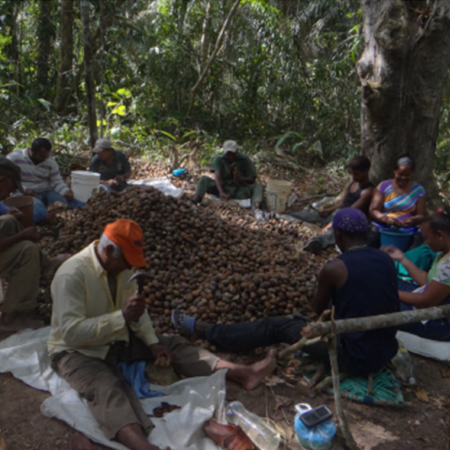
El pueblo de Aripao tiene orígenes africanos; desde la época colonial, ha pasado desapercibido para la historia moderna de Venezuela. En la actualidad, sus habitantes son considerados como la primera comunidad conservacionista de Venezuela.
Desde sus orígenes ancestrales, la comunidad de Aripao ha basado su supervivencia en su relación con la selva. Desde su llegada al Caura en el siglo XIX hasta 1960, fue una población seminómada dedicada a la recolección de productos del bosque, la pesca, la caza y la agricultura a pequeña escala. El apogeo de la población se produjo en 1840-50, cuando la demanda mundial de productos forestales naturales atrajo a inmigrantes de los estados vecinos. En esa época se produjeron conflictos entre el pueblo Aripao y la familia al mando, los Jimoes, que ocupaban y explotaban el bosque de Suapure.Tras la marcha de los Jimoes, los Aripao lo gestionaron colectivamente debido a su profundo conocimiento del bosque y a su vinculación económica con el aprovechamiento de la almendra de sarrapia o cumarú(Dipterix punctata), producto que hoy sigue formando parte de su identidad cultural.
La recolección de la almendra de sarrapia ha sido una de las actividades más importantes en estos bosques."En la década de los 30 y 40 la recolección de la sarrapia era la actividad principal en la que participábamos todos en familia y se recolectaba a gran escala", recuerda Manuel Martínez, conocedor de historias, leyendas y mitos.
En la actualidad, las amenazas de la expansión de la frontera agrícola, la tala de árboles, la caza comercial y la pesca descontrolada e intensificada están creando conflictos entre el pueblo Aripao y los extranjeros. Además, aguas arriba del río Caura comenzó la explotación ilegal de oro, lo que ha minado la tradición y la cultura de convivencia con el bosque.
Frente a esta situación y aprovechando la tradición de recolección de los sarrapiales del Caura, se realizó un Acuerdo de Conservación en alianza con Conservación Internacional y la empresa francesa de perfumería Givaudan, preservando 116.000 ha del bosque con el compromiso de recolección sostenible de sarrapia a cambio de beneficios económicos para la comunidad. A partir de este acuerdo, el reconocimiento del territorio permite la demarcación de la tierra por parte del pueblo para iniciar la demanda de sus derechos territoriales.
